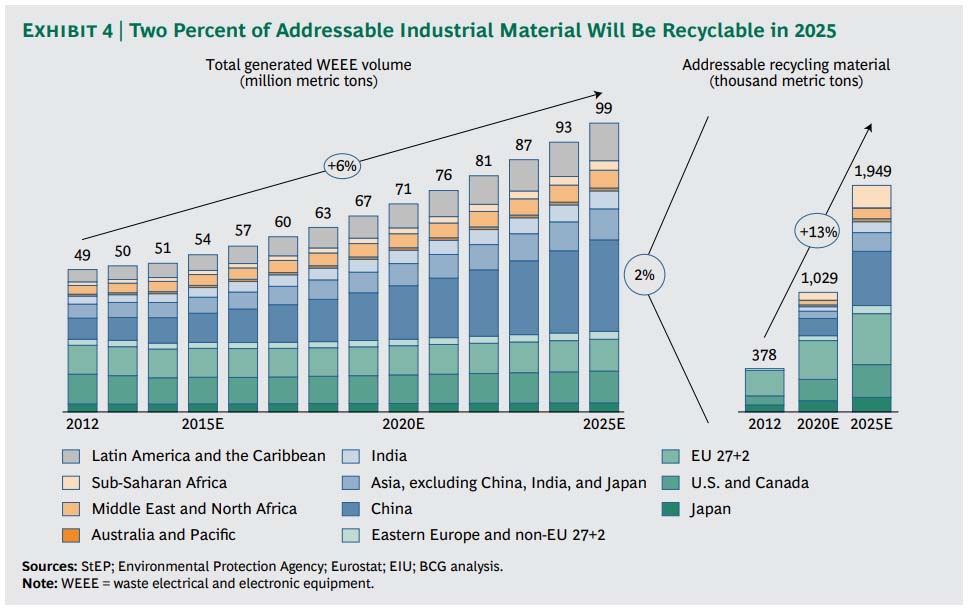In the age of sustainability, having a socially and environmentally responsible business model is no longer a luxury. Consumers and investors, increasingly conscious of the impact commercial activities can have, are exerting pressure on businesses to ensure their practices are as ethical and responsible as possible.
One of those impacts – as highlighted by this FT article – is the growing volume of e-waste. As the article notes:
“Humanity is expected to produce 120m tonnes of “e-waste” a year by 2050, up from about 50m tonnes today, according to a UN report launched at the World Economic Forum in Davos this year. Only a fifth of appliances and devices are currently recycled, with the bulk of the often toxic items ending up in landfill or incinerated.”
Spotting a sustainability opportunity, businesses are springing up with the aim of mining this e-waste mountain for ethically sourced raw materials:
“Yet electronic waste often contains valuable metals such as gold, silver and copper — there is 100 times more gold in a tonne of discarded mobile phones than in a tonne of gold ore, according to the report.”
But e-waste, both as a problem and opportunity, is far from a new topic. We shone a spotlight on gold recycling, and specifically the sourcing of gold from electrical and electronic waste, back in 2015. Two key findings were:
- Reclaiming metals, including gold, from end-of-life electronics is more complicated than reclaiming them from high-value sources of recycled gold (primarily jewellery)
- While the growing volume of e-waste offers a huge opportunity for recycling of industrial materials, the waste that lends itself to gold recycling will constitute only 2% of the produced waste volume.

